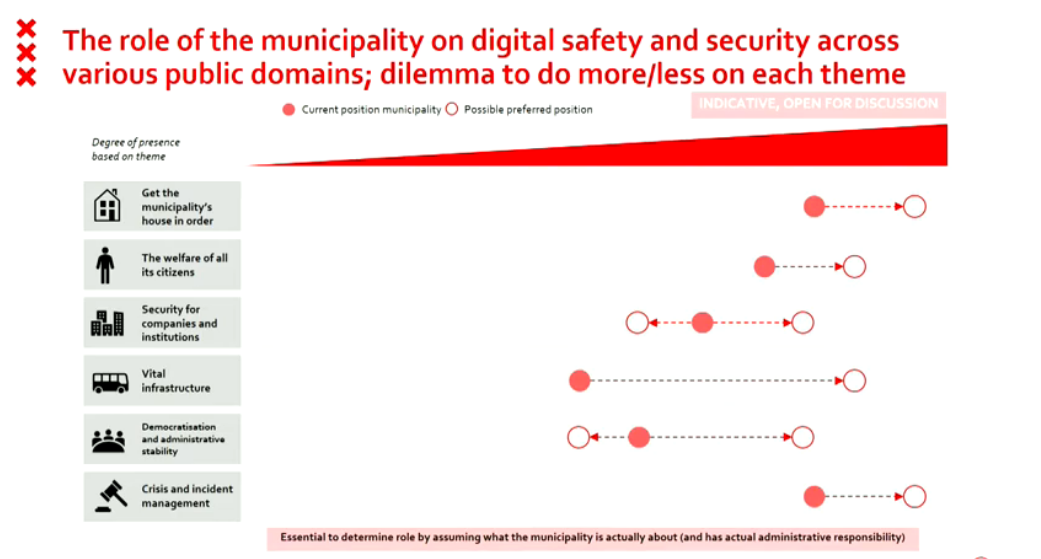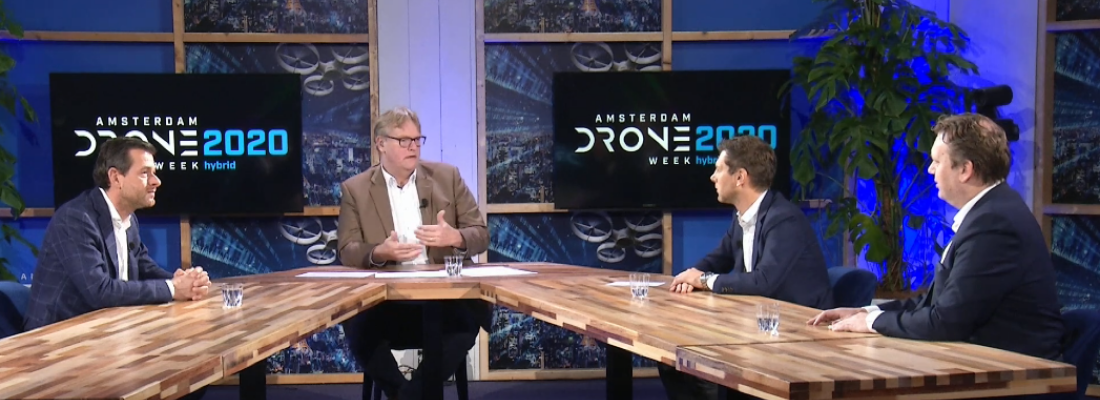What are the building blocks of a digital safe city? We share some highlights from the panel discussion ‘Digital Safe Cities: securing the infrastructure of tomorrow’ during ADW Hybrid 2020 where the City of Amsterdam shared their digital agenda.
Panel members: Jelle Niemantsverdriet, National Security Officer at Microsoft, Tijs van Wijk, Advisor to the Major of Amsterdam concerning Public Security and Safety, Oscar Koeroo, Theme lead Government & External Relations to the CISO at KPN. Moderator: Rene Pluis, Lead Country Cyber Security, The Netherlands at Cisco.

Mr Van Wijk: “We started the agenda in 2020 but the process started a few years ago and envisioned 2030. That’s why we started the agenda now because it’s getting more and more important. Corona hits, and you already see the importance of a robust and vital infrastructure. Concerning for instance the theme of ourselves, people, we work from our home and not at the office anymore. So I think, it is one of the proves that vital infrastructure, not vital so much for threatening of life but in an economic sense. If we didn’t have that vital infrastructure in the Netherlands, I think Corona would have even hit harder.”
Is it possible to get such a seamless integration over such a large area of the municipals of Amsterdam?
Mr Koeroo: “It takes focus, and it takes focus regarding both the technical side and what you want to get out of this functionally. We need to have a reliable infrastructure, it needs to be connectable, it needs to be able to exchange information and standardization is key, basically lift out the data of the cyclops that there currently in. Then we can do more things in the municipality, but also throughout the country, and connect cities and infrastructures. We can actually do this. But it takes time, it takes focus, it takes some way to figure out okay this is the defacto standard, let’s not be greedy and create a new one. We see this way of working actually happening at technical company’s.”
How do you see the future?
Mr Niemandsverdriet: “Personally, I’m a tech realist. it’s almost by definition, as soon as we make something, people will start using it in a slightly different way. And sometimes with better consequences. Off course there are also negative examples. What we should keep in mind, I think maybe quoting Bruce Springsteen “Just a little of that human touch”. Let’s not get too excited about our technology perspective. Let’s not forget there’s citizens there’s companies, those are the people for whom we are trying to do this. Let’s be understandable, let’s be empathic, towards how they want to live in Amsterdam, what they want to do, how they want to run their business and let’s try to see how technology fits in their lives and keep that really in the back of our minds, whenever we are designing deploying and evaluating, to make sure we are still meeting that objective of serving those people.
How can innovative cyber development for instance drones, contribute to society?
Mr Van Wijk: ”We got a physical world and a digital life as well, that interacts, that’s the same. It’s two layers of the same world we live in. For instance, we have a lot of censoring in the near future, and censoring will help us with data information in the city, for instance for crowd management and crowd control. What we want to achieve is, we want to be in the lead, and not get to the point where is going wrong. And that’s why information and censoring can help. You can monitor and predict what is going to happen in the future, in minutes, in hours in days so to say.
The drone ambulance is a potential from bringing an AED from one point to another and speeding up the process. That’s a current example. There will be more examples to come. Often we refer to camera’s and of course you’ll get the privacy discussion, but so to say eyes and ears help us. And I believe in checks and balances, as long as the public embraces technology, because it brings them health, it brings them safety and economic prosper, they will embrace it.”
This asks a lot of the infrastructure. How do you envision this?
Mr Koeroo: “So on one hand you want to rely on it as much as possible but it will gain you a lot of traction in what you can do. But on the other hand, problems must be localized and you must be able to contain a problem whatever the type is, could be digital, could be physical. I see digital and physical flowing over to each other again. For some companies we already see this for access control. What does it mean for access control to a system or to a door? Basically its more of the principles again. You have to ask for approval in both cases, we see this blending In in all kinds of areas. We need to have a plan that not just empathizes on problem or one set of vendors, we need to look at broader scale, how does this work into an entire ecosystem?”
We are getting dependent on a lot of functionalities, software, programs, infrastructure. How do we safe guard against that?
Mr Niemandsverdriet: “Building on my more human focus I think we should really try to acknowledge great possibilities with great power, with great power comes great responsibilities, we need to be aware that we, technology people, are not only controlling anymore, we are controlling things in the physical world, whether its drones, whether its shipping containers, whether its hospitals. Good shout out to the municipality of Amsterdam for taking this transparency and accountability approach in publishing this algorithm register to say, for example, the cars that drive around to see if you have paid for your parking ticket with automatic license plate scanning. Explain what’s the algorithm uses, what’s the kind of data we collect, how do we preserve this, how do we train this algorithm. Really trying to explain how you go about with these kinds of developments.”
In 2030 or later, do you have to be in Amsterdam to participate in the municipality of Amsterdam?
Mr Niemadsverdriet: “I should have brought my crystal ball for this. I think there’s definitely potential there, try to think about how can we make all these traditional landmarks tourist attractions more accessible to a wider audience using digital means you don't have to physically go to the Rijksmuseum to admire ‘De Nachtwacht’, if we can come up with a very clever way to slightly different and therefor very good.”
Will a digital strategy be interesting for the municipality of Amsterdam?
Mr Van Wijk: ”Well a larger footprint than we have now, not larger than our physical footprint . We have the problem of too many tourists in Amsterdam, overcrowded. If you can make a more hybrid experience would be very interesting.”
Watch the complete session here
Watch all the ADW Hybrid 2020 sessions here






